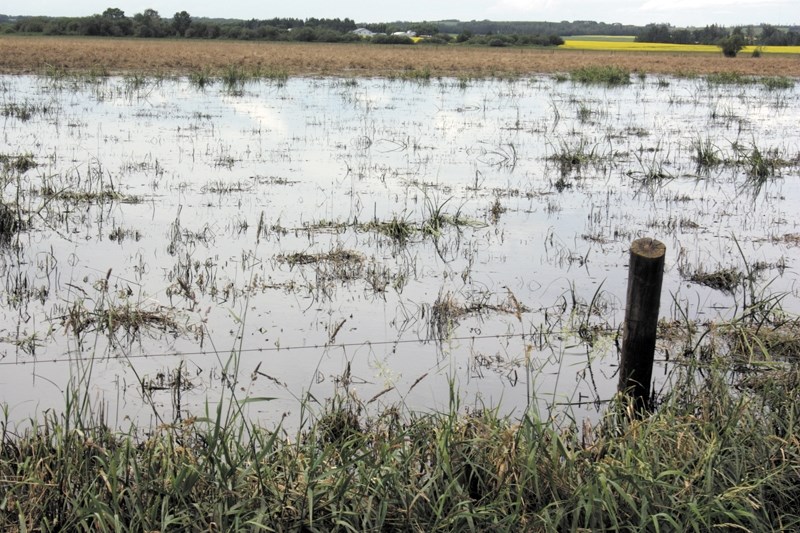Despite the unusually heavy rainfall in the area, at this point Westlock County is not likely to declare an agriculture disaster.
Around the region, however, other municipalities have made such declarations. Last week, the County of Barrhead declared a disaster in light of flooding from the Paddle River.
Although some fields in Westlock County are visibly drenched and have areas of standing water, the situation is not severe enough to declare it a disaster, according to Jacolyn Tigert, the county’s agricultural services supervisor.
“We’ve talked about it, but right now we’re not prepared to do it,” she said. “We’re continuing to watch the situation. We’re nowhere near in the severe situation that Barrhead and Lac St. Anne are.”
Nonetheless, in the period from June 19 to July 18 the Westlock area has seen as much as 20 cm of rain, which is an amount of rainfall that would be expected less than once every 12 years, according to information available on the Government of Alberta website. Rainfall for the whole northwestern part of the province has been much higher than usual.
As for the effects on the crops, Tigert said she is not worried about crops being lost entirely, but said if the rainfall keeps up it could mean some don’t do nearly as well as they normally would. Canola, for example, could be in trouble if the weather keeps up.
“It’s going to really difficult for the pods to form and fill out,” she said. “Right now everything seems OK, but if we continue to get more moisture we’re going to have issues with the canola, for sure.”
Another issue that farmers are seeing because of the rain is it’s difficult to do some of the spraying they normally would.
“They’re spraying for sclerotinia right now and they can’t get into the fields to do it by field sprayer, so you see a lot of aerial spraying,” Tigert said.
Sclerotinia is a plant-based fungus that can have devastating effects on canola crops by rotting the stems of the plants.
Aside from that, the water causes a physical hazard for farmers trying to work in their fields.
“Getting in the field and maneuvering around these low spots is going to be an issue because they’re so wet,” she said.
In the absence of any declaration from the county, farmers who are affected by the weather will have to rely on their crop insurance to cover any losses they might suffer.
Tigert said, however, that there is a bit of a silver lining when it comes to the rain, because it does have an effect on some insect populations.
“One good thing is our grasshopper population is really reduced. They don’t like the wet; they like hot and dry weather,” she said. “Grasshoppers are very few right now.”
Rainfall maps are updated weekly at the Ministry of Agriculture and Rural Development’s website. Visit www.agric.gov.ab.ca/app116/quick.jsp# to access them.

